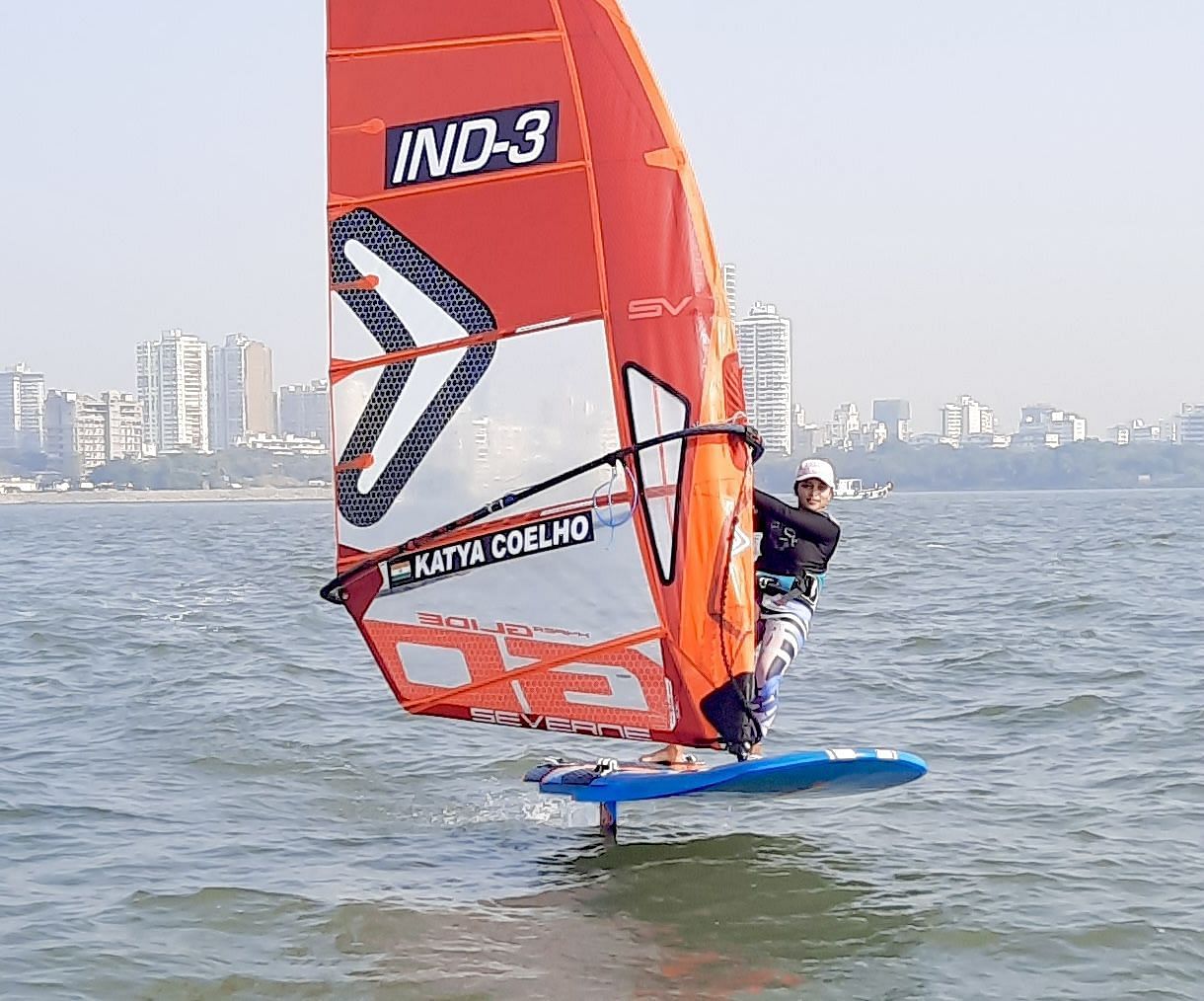
Challenges female windsurfers face in India
To sharpen her competitive skills ahead of a major competition, India’s leading female windsurfer Katya Coelho boarded a flight to Pattaya, a popular beach resort in Thailand that has good facilities for windsurfing.
She revealed:
“Since there are no proper facilities to practice in India, we go to Pattaya. In Pattaya, there is also an opportunity to compete in competitions.”
It’s expensive to practice and compete in Thailand. For one practice session, the 23-year-old Indian windsurfer has to pay roughly between $100 to $200 in coaching fees.
Katya recently went to Pattaya for a month-long exposure tour and plans to go again next month for 20 days to compete in an international event as well as for practice sessions.
Katya explained:
“Thailand is nearest of all the other places on the Asian circuit. It is more convenient for us to practice in Pattaya.”
The young windsurfer from Goa paired with her brother Dayne to compete at the 2018 Jakarta Asian Games in a mixed sailing RS One event but finished down the ladder. Each team in the mixed RS One event has male and female sailors. Individual scores are then added for the final result.
For Katya, the Asian Games in Jakarta turned out to be a painful experience as she injured her knee.
She claimed:
“It was unfortunate that I got injured and couldn’t perform.”
With the postponed 2022 Asian Games expected to be held next year in September in China, Katya's aim is to compete in an individual category.
The windsurfer told Sportskeeda over the phone from Goa:
“I have done fairly well in the first round of the domestic Asian Games qualification round held recently. Hopefully, will make the national team for continental games.”
With the second round of trials scheduled for January 2023, Katya will have to battle with her inner self as the other athletes in the trials will not compete.
She added:
“I will be the lone female competitor for the Asian Games qualification round two. It might not be easy as I have to earn points to qualify.”
Katya Coelho opens up about the difficulties faced by Indian windsurfers
According to Katya, the lack of a good coaching and support system, including facilities, makes the situation challenging for female windsurfers in India.
Windsurfing and sailing in India is mostly associated with army and navy clubs. Fewer civilians opt for sailing or windsurfing due to costly equipment and lack of facilities. Perhaps this could be one of the reasons there is skeleton participation at the domestic level.
Despite windsurfing not being a popular sport, Katya followed in the footsteps of her father Donald, who was an avid sailor and competed on the international circuit.
She recalls:
“I was ten years old when I started learning sailing lessons from my father. Without family support it wouldn’t have been possible for me to compete at the international level.”
Katya claimed she has competed in more than six Asian sailing championships and won medals too.
India's windsurfing activity is mainly confined to the western coastline. The dry months from October/November to March are the best seasons to venture out and explore deep sea water.
Katya said there is generally no support from any quarter during the build-up period, which is an important phase before international competition.
She spoke of the challenges a windsurfer faces:
“Once you make the national team only then there is a possibility of some assistance.”
Competitive windsurfing is all about being agile and making quick decisions. Riders use their bodies to control the board that demands extreme physical fitness. If Katya is to be believed, being a windsurfer is like a full-time job.
She said:
“It takes a lot of time to go out to practice in deep-sea water. To improve my fitness, I often go to the gym to strengthen my major and minor muscles.
For body balance, she has included kick boxing in her exercise routine.
Katya said:
“I enjoy windsurfing as it keeps me close to nature. The charm of the deep sea, the palpitations, it is sometimes difficult to explain as one has to go out to experience that kind of feeling.
“The best moment is always after a hard session because you sit back and rejoice at what you have achieved in practice.”
Katya minced no words, saying the scope of improvement is negligible if the windsurfer doesn’t have adequate funds.
She explained:
“The only way to improve is to practice abroad. For us, the nearest destination to practice on the Asian circuit is Thailand.
“A good quality windsurfing board to compete at the international level will cost more than Rs 8 lakh.”
Katya was of the opinion that there should be more female coaches to encourage young girls to take up windsurfing.
She said, before heading to a gym session:
“More participation will certainly improve the overall standard of windsurfing in the country. That’s one way to attract youngsters to take up windsurfing at the grassroots level.”